Szentesi Winery
Etyek-Buda Region
Szentesi is one of Hungary’s biggest champions when it comes to re-discovering old grape varieties, and bringing them back into the vineyard and into the glass. His passion is researching ancient grape varieties (which mostly died out during the phylloxera scourge in the late 19th century), and then acquiring rare vine cuttings from the research institute to plant in his vineyards. He has done this with dozens of varieties, which he then makes experimental small quantities of wine with—magical re-incarnations of ancient, Hungarian varietals which have been (nearly) lost to history. He is the go-to man when it comes to growing grapes like Laska and Tihanyi Kék—grapes grown nowhere else in the world, which he brought back from nothing. Szentesi has 16 hectares of vineyards planted with nearly 30 grape varieties. About 15 percent of the area is dedicated to growing old, obscure varieties that he has resurrected. His cellar is in Budaörs, just beyond Budapest’s border. But his vineyards are at Lake Velence, a 45-minute drive from downtown Budapest—officially part of the Etyek-Buda region. The shallow lake is Hungary’s third largest, and it contributes to the area’s special climate and terroir.
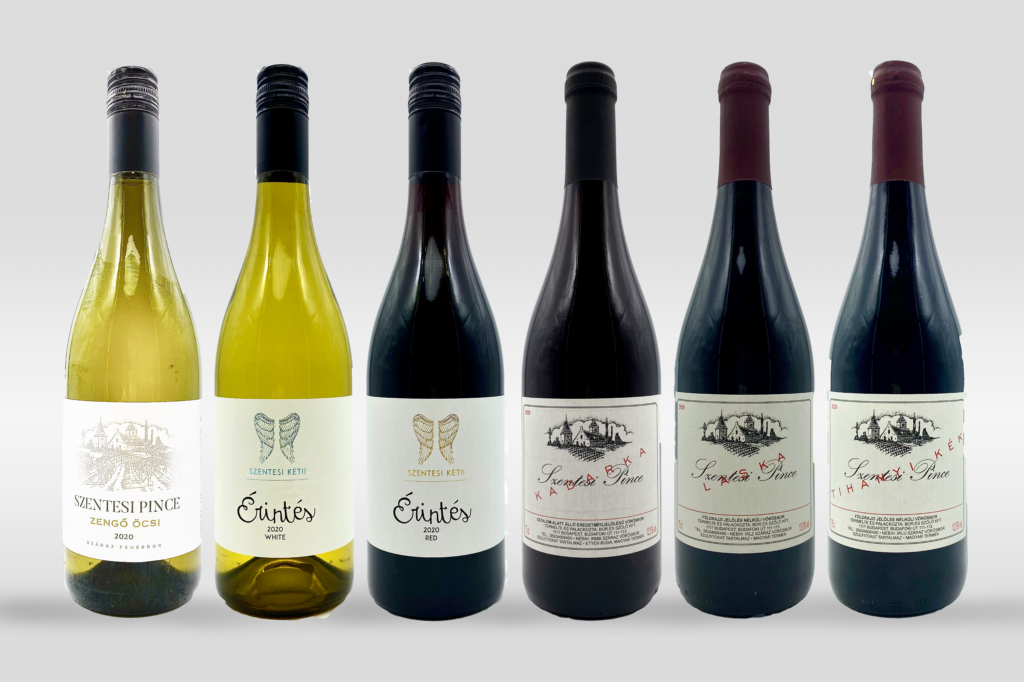
Szentesi’s Grapes from the Past (6-Pack)
This Box Includes
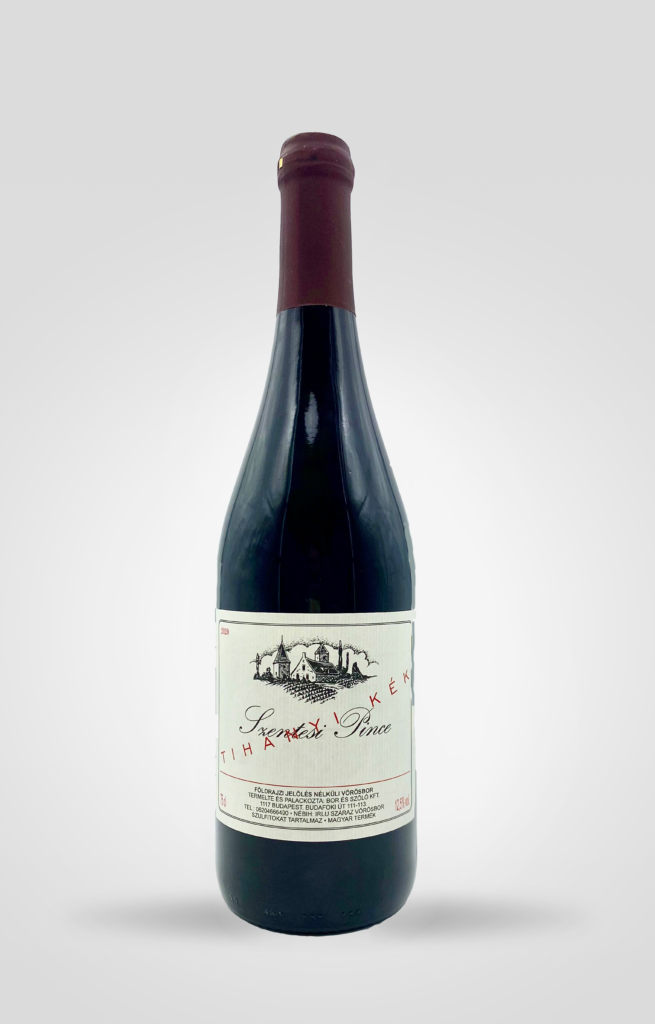
Tihany Kék, 2020
There is, perhaps, just one other winemaker in Hungary (which means, also, in the whole world), who grows the Tihany Kék variety. Of all the ancient Hungarian grape varieties that winemaker József Szentesi has resurrected, this is one of the most exciting. Tihany Kék once was amongst the most popular varieties in Hungary, until phylloxera hit in the late 1800s and caused many varieties to disappear. Szentesi has given this variety a chance to survive, after planting vines from cuttings he discovered in a research institute. Tihanyi Kék is a mid-ripening variety, which makes a light wine with good structure. It has a unique spiciness and is not comparable to any other grape. This wine is from vines that Szentesi planted in 1988, on soil that is partly volcanic, with loess, granite, limestone, andesite, and quartz. Grapes were harvested on September 14th and 19th, and the wine was barrel aged for four months. It was spontaneously fermented and unfiltered. This wine is on the lighter side, with a pale purplish-blue color. It has a beautiful intensity and dense flavors. There are aromas of rose petals and lavender, red peppercorn, Szechuan pepper, cinnamon and juniper. On the nose, it has an intriguing earthiness and scents of green leaves. On the palate, it has a spiciness combined with a floral character. It is also peppery and vegetal, with hints of Worcester sauce, cloves, and blueberry. This lively wine is a real experience to sip, and not just because of its rarity and its back-from-the-dead story. Because of its lightness and complexity, you might want to enjoy this wine on its own, but it is intense and dense enough to enjoy with spicy foods. We like it with Middle Eastern, Mediterranean, and Greek dishes. Maybe with a cheese plate, or stuffed eggplant. Only 700 bottles were produced.
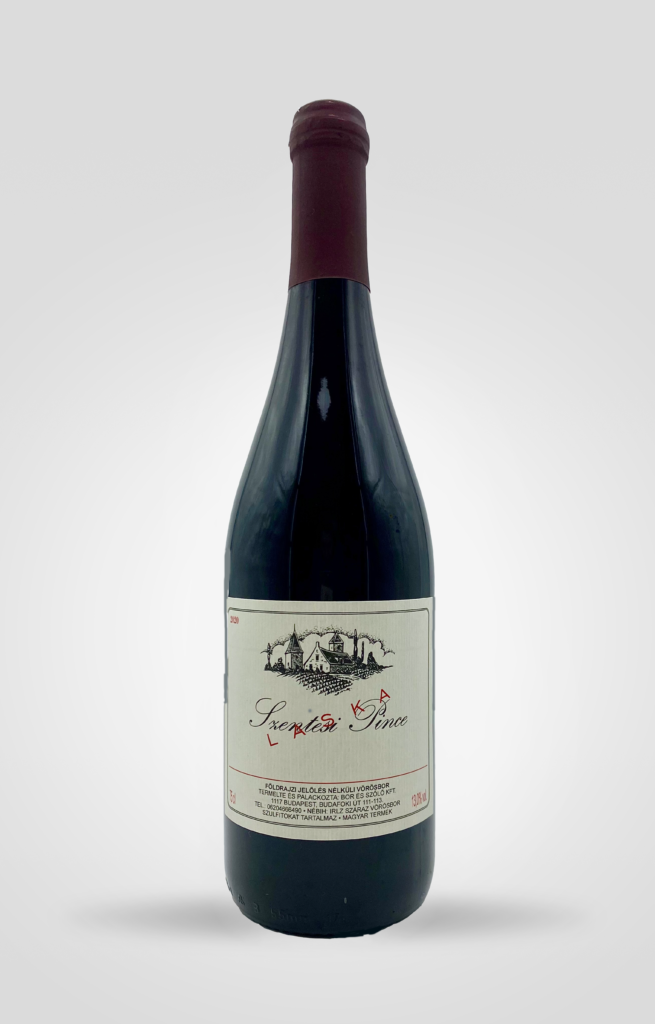
Laska, 2020
Along with Tihany Kék, Laska also used to be amongst the most popular varieties in Hungary. But then phylloxera invaded in the late 1800s and changed the landscape of Hungarian (and European) wine. Many old Hungarian varieties died out and were not replanted. Only 10 Laska vines survived, which Szentesi discovered at the wine research institute in Pécs and planted in his vineyard. He thinks Laska has a huge potential. It’s a late-ripening variety, with small bunches. It needs yield control to ensure that it ripens well. But when well-ripened, Laska is a full-bodied, high tannin wine, which might remind you of wines from Bordeaux. Laska is generally dark—with blackberry, black cherry, plum, cocoa, and coffee characters. This wine is medium-bodied, with a dark color. Its strong tannins and acidity are well-balanced. This is a complex wine, with lots of intense and layered flavors. It’s on the fruity side—lots of black currant, cranberries, blackberries, fresh raspberries, candied fruit, and black pepper. Cherry liquor lingers in the long and deep finish. The wine was spontaneously fermented, barrel-aged for 14 months, and unfiltered. When we drink this wine, we marvel at how unlikely it is that it even exists today in our glasses. Only 700 bottles were produced. This is an easy one to pair with food. Drink with roasted duck or beef roast with fruit sauce, or turkey and cranberry sauce.
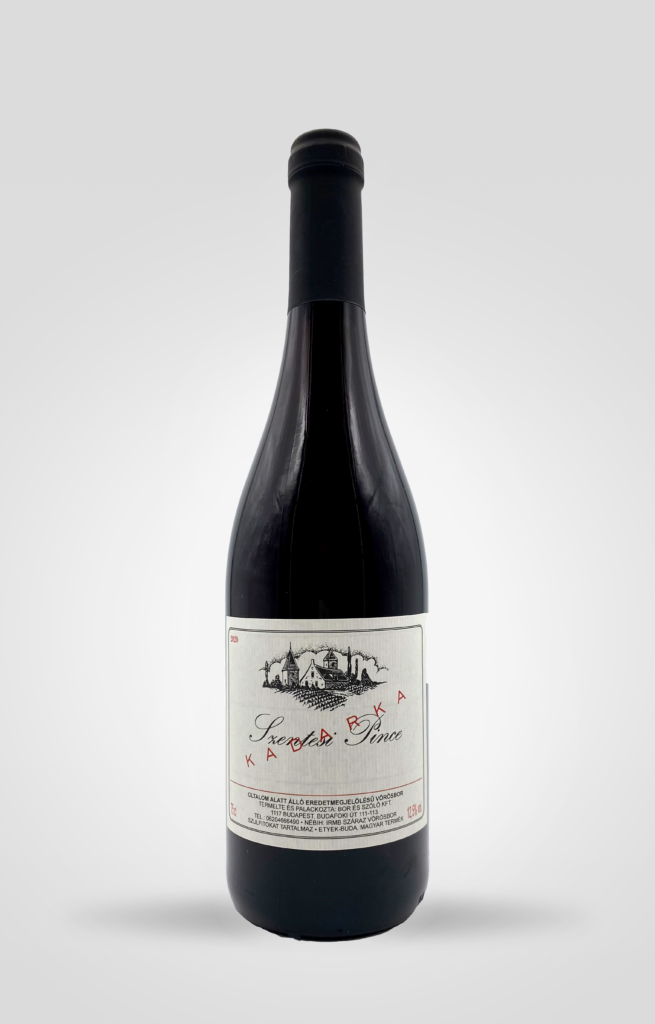
Kadarka, 2020
Kadarka is a beloved Hungarian grape, grown in many parts of Hungary. It was most likely introduced to Hungary from the Balkans, and it’s also grown in many other countries in the region (under different names; most notably it is called Gamza in Bulgaria). Kadarka is typically medium-bodied, with gentle tannins, fresh acidity, and some spicy aromas. It’s often compared to Pinot Noir in that it can be difficult to fully ripen and to work with in the vineyard. This wine checks all the boxes of what an ideal Kadarka should be like. It’s on the light to medium-bodied side. It’s crisp, gentle, and easy drinking, with a nice balance between the light tannins and the acidity. Yet its flavors are vibrant and rich, with lots of floral notes (like rose petal and violet); fruity flavors like cranberry, currant, and lemon; and tobacco spice. This Kadarka is from old clone vines from the Nadap vineyard planted in 1988 and harvested on September 24th. It was barrel-aged for one year in used oak. It was spontaneously fermented and unfiltered. Its light and easy-going personality makes this wine a perfect match for other easy-going foods, like pizza or grilled cheese sandwiches. In Hungary Kadarka is traditionally paired with Halaszlé (Fisherman’s soup), which is served on Christmas. Only 1,000 bottles were produced.
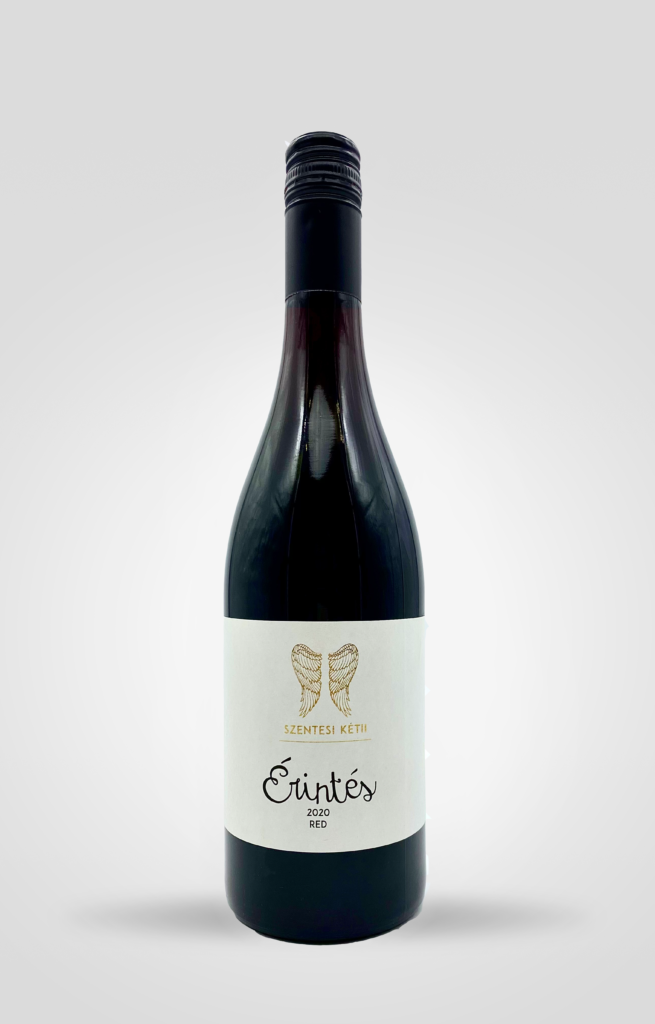
Red Érintes, 2020
The Érintes wine blends are the creation of József Szentesi’s daughter, Katalin (you can see her name on the label). The idea came accidentally in 2014, a disastrous year when most of the crop was destroyed. She decided to turn some of the leftover grapes into a blend, which turned out to be a charming and silky wine. Now they make it every year. The name Érintes refers to the wine’s silky texture. Even though the blend is different from year to year, they always aim for that texture. The wings on the label come from Katalin’s belief in angels. This wine is a blend of 40 percent Merlot and 60 percent Cabernet Sauvignon. Grapes are from the Nadap vineyard and were harvested on September 15th and October 1st. This is a dark wine, with an intensely fruity blackberry nose. But on the palate, it’s more strawberries and raspberries, with some spicy anise, tobacco, and cassis. This is a medium-bodied wine, with concentrated flavors, and lots of fresh and vibrant character. It was spontaneously fermented, aged for almost a year in used oak barrels, and unfiltered. József Szentesi recommends drinking this wine with roasted duck or grilled lamb (and we agree). Don’t let the screw cap fool you–this wine could even benefit from being decanted.
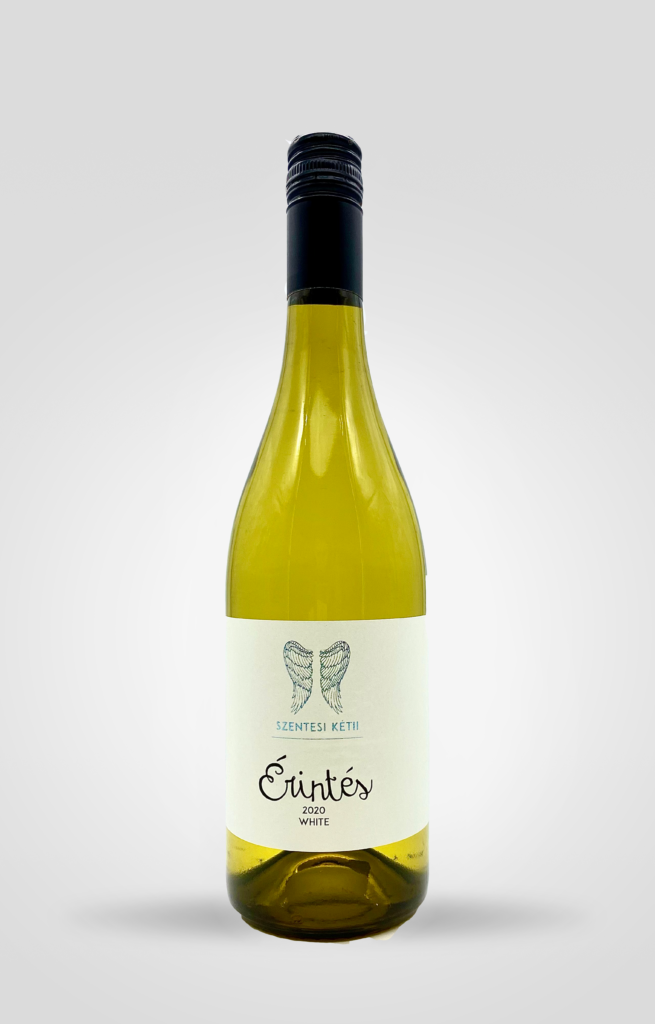
White Érintes, 2020
This is a wine to drink in the moment—the moment when friends drop by and something refreshing and simple is called for, or the moment you have prepared something delicious (but not too fussy) to eat and want to open a bottle that matches the mood. Or really, just any moment when you want to spontaneously open a bottle of wine. This wine is a blend of 40 percent Zengő, 40 percent Riesling,10 percent Zöldveltelini (Grüner Veltliner), and 10 percent Sauvignon Blanc. The least known variety in the mix, Zengő, stands out in the nose. Zengő is a Hungarian crossing—a cross of Ezerjó and Bouvier—which produces aromatic wines with good acidity. There are also some aromas of cut grass from the Sauvignon Blanc. This is a steel tank wine and is all about fruit flavors—green apple, pear, gooseberry, lime, quince, and persimmon. We love the hint of dusty minerality that also emerges. This is a medium-bodied wine, with healthy acidity. Grapes come from the Nadap vineyard, on the northern side of Lake Velence. Planted in 1987, it has high limestone content, with some loess, volcanic magma, and andesite. 2020 was a great vintage in the area, and harvest happened on September 9th, 15th, and 29th. The Érintes wine blends are the creation of Szentesi’s daughter, Katalin, who first started making the red blend in 2014 and added the white Érintes blend in 2019. The name refers to the silky texture of the wine. Even though the blend is different from year to year, the texture is always what they aim for. Serve this wine well-chilled, and enjoy with smoked fish, pad Thai, steamed mussels, or potato latkes.
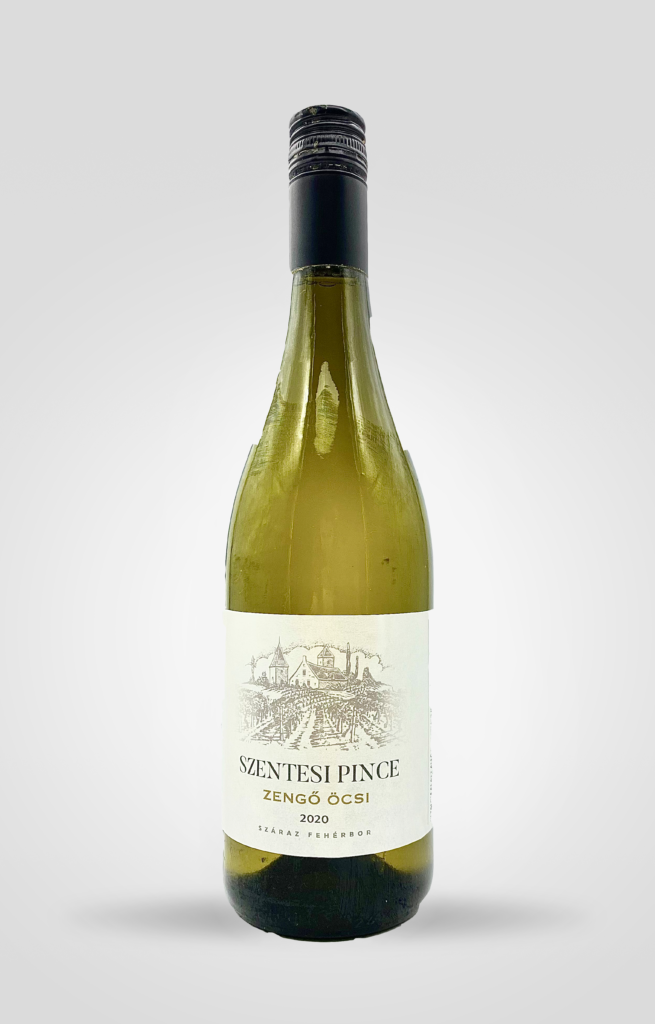
Zengő Öcsi, 2020
The Zengő grape is a Hungarian crossing (of Ezerjó and Bouvier) created in 1951 by Ferenc Király, who was an agricultural scientist and prolific creator of grape crossings. Working at different grape research institutes across the country, he spent most of his life studying aromatic grape varieties. He created some other Hungarian varieties, and he seemed to like the letter Z—Zefír, Zenit, Zeta, Zeusz. Zengő is only grown in Hungary, mostly in Etyek-Buda, around Balaton, and occasionally in Eger. It produces aromatic wines with good acidity, and it is usually used in blends. So this 100 percent Zengő is an unusual one. Grapes are from Szentesi’s Nadap vineyard at Lake Velence, harvested between September 6th to 9th. This wine is a complex but easy-drinking one—with lots of nice texture, a rich and thick mouthfeel, and a creamy yogurt body. It has elegant flavors of mango and pineapple, as well as candied fruit flavors (lemon and pineapple). And so much pear! Poached pear, quince, and baking spices give the wine a warm sensation. Some tannins give the wine a nice structure, and a sort of smokiness that you could think comes from barrel aging (but this wine only saw steel tanks). We love its elegant fruit-forward character. Try this wine with salted cod dishes, creamy risotto, mushroom pasta, or eggplant dishes. Only 2,500 bottles were produced.
